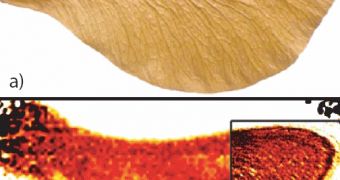Extremely high frequency is the highest radio frequency band. EHF runs the range of frequencies from 30 to 300 gigahertz, above which electromagnetic radiation is considered millimeter wave.
Much like X-ray scanners used in airports to see thorough luggage without invading one's privacy, terahertz radiation scanners must usually be very close to the objects they are imaging. Doubts have lingered over whether it is possible to use THz waves to image objects that are far away, because water vapor in air absorbs THz radiation so strongly that most of it never reaches the object to be imaged.
Now, for the first time, a joint team of scientists from MIT-Sandia will demonstrate THz imaging system that obtains images from 25 meters away. The technique takes advantage of the fact that there are a few "windows," or frequency ranges, of the terahertz spectrum that do not absorb water very strongly.
They designed a special, semiconductor-based device known as a "quantum cascade laser" that delivers light in one of these windows (specifically, around 4.9 THz). They shine this light through a thin target with low water content (for example, a dried seed pod) and a detector on the other side of the sample records an image.
Actually it's not ordinary visible light, but a laser, maintained by a refrigerator at a temperature of 30 Kelvin (-243.15 Celsius or -405.67 Fahrenheit), where it produces 17 milliwatts of power (as opposed to the microwatts of power typical of pulsed terahertz sources) in order to provide enough terahertz radiation to obtain a decent image.
By increasing the power of the lasers and sensitivity of the detectors they can enable imaging of thicker objects or imaging of the reflected light, which would be more practical for security applications. In addition, the development of high-operating-temperature quantum cascade lasers, which operate without the use of cryogenic materials, may also increase the availability of this approach. In the closer term, however, this approach may enable sensing of chemical residues or contaminants in the air.
There are many potential applications for this terahertz radiation imaging. It could pave the way for a new generation of submillimeter devices that could someday be used in high-resolution sensors on spacecraft, and here on Earth in a new class of highly integrated and lightweight imaging devices that could literally cut through fog and see through clothing fabrics.
For example, it would be possible to remotely view if some civilian walking into a building or just passing in the street has plastic explosives hidden under his coat.

 14 DAY TRIAL //
14 DAY TRIAL //